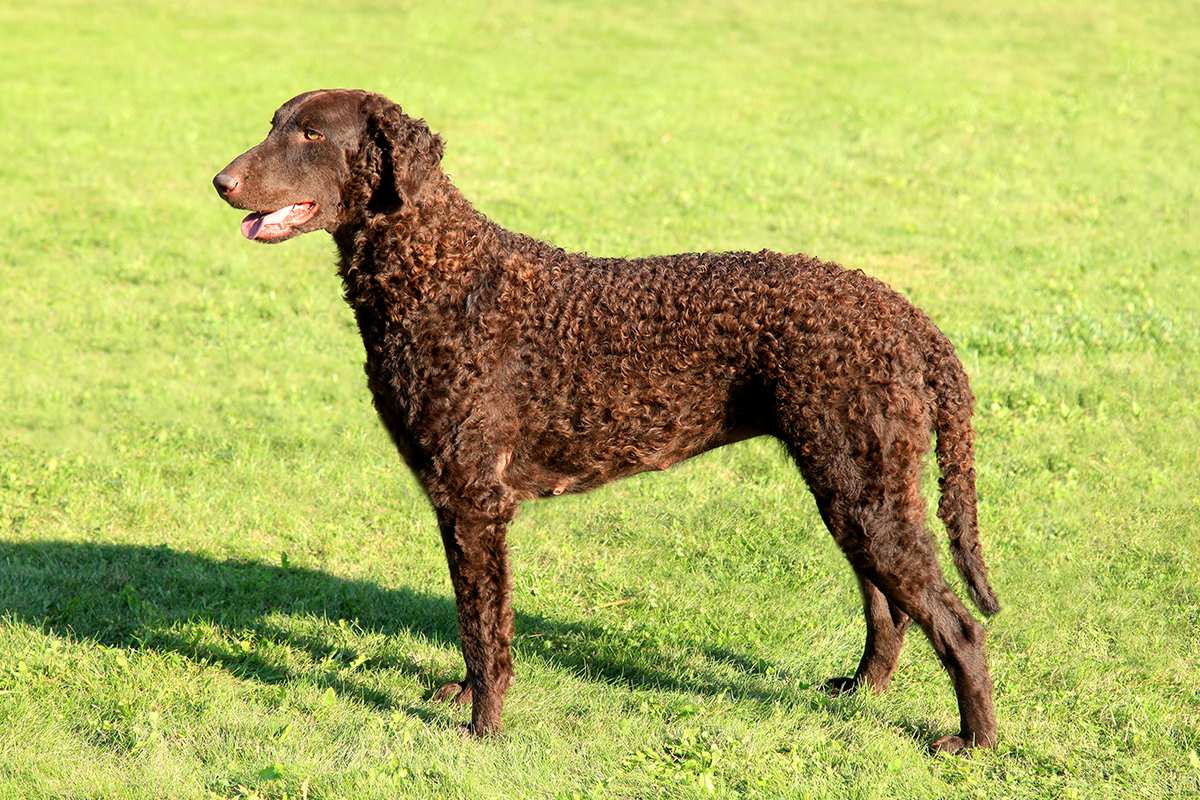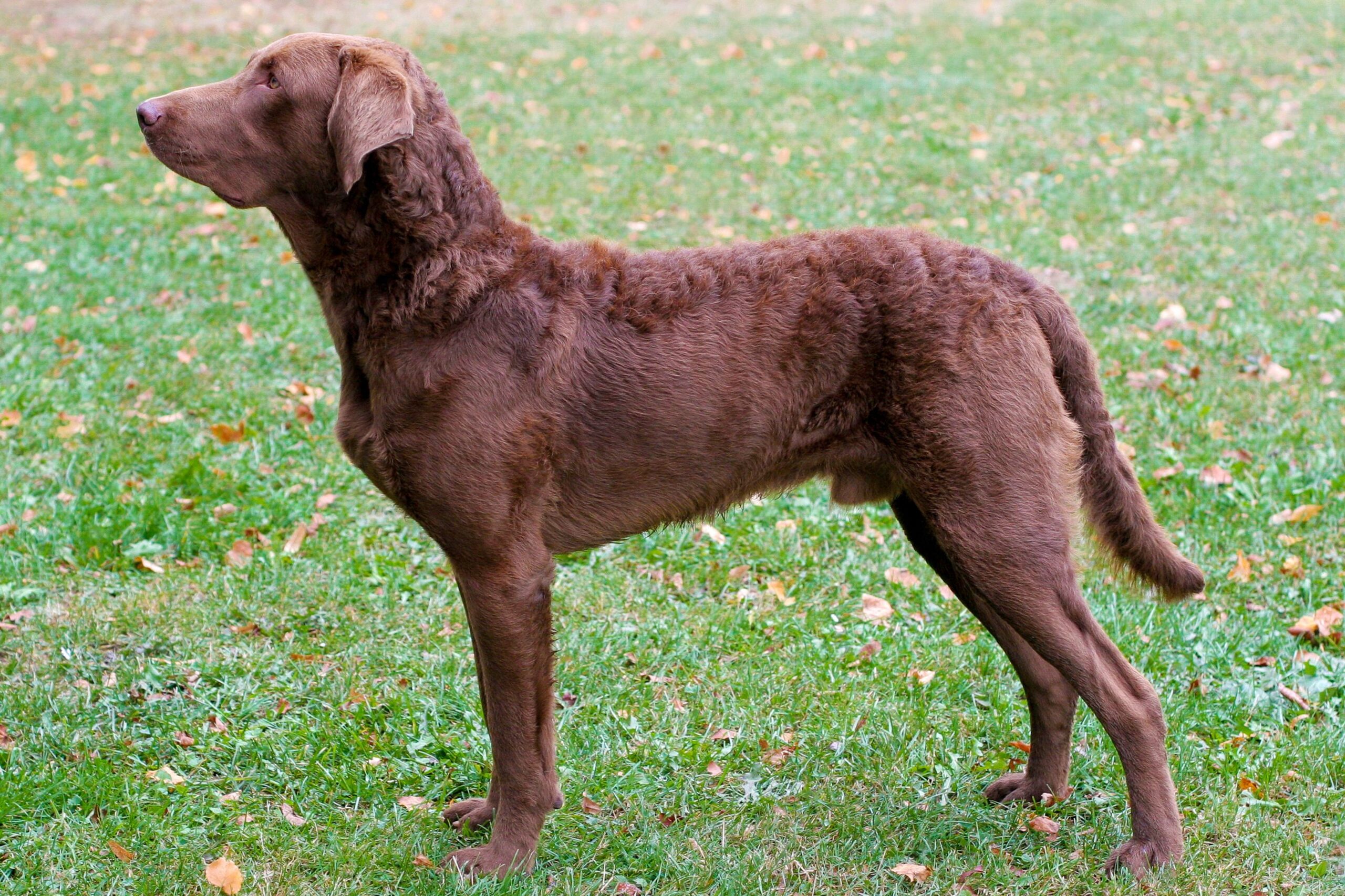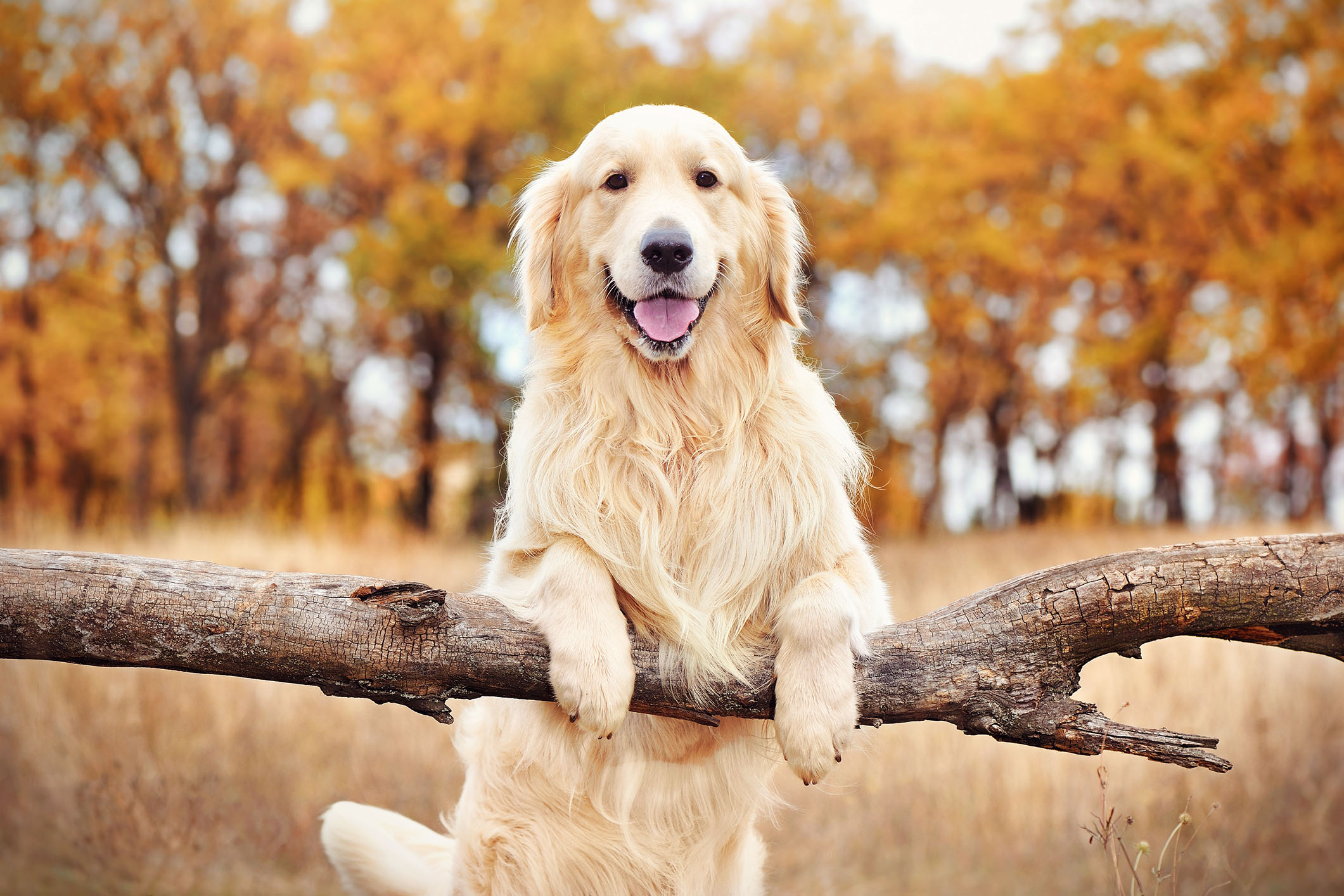There’s a reason the Labrador Retriever has been America’s most popular dog breed for over 30 consecutive years. These friendly, intelligent, and versatile dogs have captured hearts worldwide with their perfect combination of companionable temperament and working ability. Whether serving as family pets, therapy dogs, hunting companions, or search and rescue heroes, Labs excel at virtually everything they do with characteristic enthusiasm and heart.
At pawtrix.wiki, we’re dedicated to providing detailed information on all dog breeds, but the Labrador Retriever deserves special attention not just for its popularity, but for its remarkable adaptability and genuine goodness of character. Unlike breeds developed primarily for appearance or specialized working traits, Labs represent a beautiful balance of form and function that creates truly well-rounded dogs.
What sets Labradors apart from many breeds is their unique combination of trainability, sociability, and versatility. Developed to work closely with humans in demanding conditions, they’ve evolved into dogs that genuinely enjoy human companionship and cooperation. Their desire to please, combined with natural intelligence and physical capability, makes them suitable for an astonishing variety of roles – from gentle family companion to dedicated working partner.
Throughout this guide, we’ll explore everything that makes Labrador Retrievers special – from their fascinating history to their distinctive traits, care requirements, and whether they might be the perfect match for your lifestyle. By the end, you’ll understand why Lab enthusiasts are so passionate about these wonderful dogs and why the breed continues to win new devotees with each generation.
From Newfoundland to Worldwide Favorite: The Labrador’s Journey
The Labrador Retriever has a fascinating history that traces back not to Labrador as the name suggests, but to neighboring Newfoundland in Canada, where their ancestors worked alongside fishermen in demanding maritime conditions.
Origins in Newfoundland
The breed’s story begins in the late 1700s and early 1800s on the island of Newfoundland, Canada. Here, local fishermen developed what were then called “St. John’s Water Dogs” – medium-sized black dogs with short, water-resistant coats who worked tirelessly alongside humans in the fishing industry.
These hardy working dogs performed crucial tasks:
- Swimming in icy North Atlantic waters to retrieve fishing nets
- Carrying lines between boats or from boats to shore
- Retrieving fish that escaped the nets
- Working cooperatively with fishermen in small boats
These demands created dogs with several distinct characteristics – water-resistant coats, “otter” tails that served as powerful rudders while swimming, webbed feet for swimming efficiency, and perhaps most importantly, a remarkable willingness to work with humans under difficult conditions.
Development in England
The breed’s development took a significant turn when English sportsmen visiting Newfoundland in the early 1800s noticed these remarkable dogs and brought some back to England. There, particularly in Poole Harbour, the Earl of Malmesbury and other nobility began breeding them as hunting retrievers.
It was during this period that the breed received its somewhat misleading name. Though the dogs came from Newfoundland, they were associated with the neighboring Labrador region, and the name “Labrador Retriever” became established.
In England, selective breeding refined the dogs for:
- Excellence in retrieving game, especially waterfowl
- Strong scenting ability
- Soft mouth for retrieving without damaging game
- Trainability and biddable temperament
- Sturdy constitution for working in various conditions
The breed was officially recognized by the English Kennel Club in 1903 and by the American Kennel Club in 1917. From these foundations, the breed’s popularity grew steadily throughout the 20th century.
Rise to Worldwide Popularity
While initially valued primarily as hunting dogs, Labradors’ intelligence, trainability, and excellent temperament soon led to their use in numerous roles beyond the hunting field. After World War II, the breed’s popularity exploded as they proved themselves adaptable to family life while maintaining their working abilities.
Today, Labradors serve in an astonishing variety of roles:
- Family companions and pets
- Service dogs for people with disabilities
- Therapy dogs in hospitals and nursing homes
- Search and rescue workers
- Detection dogs for narcotics, explosives, and other substances
- Hunting retrievers
- Competitors in various dog sports
Their versatility and adaptability have made them the most registered breed in the United States, the United Kingdom, Canada, Australia, and many other countries, truly earning them the title of the world’s favorite dog.
The Labrador Look: Form Follows Function
The Labrador Retriever’s appearance clearly reflects its development as a working retriever. Every aspect of the Lab’s physical structure serves a practical purpose, creating a dog that combines athletic ability with weather resistance and functional efficiency.
Size and Structure: The Athletic Retriever
Labradors are medium to large dogs with a distinctly athletic build:
- Males typically stand 22.5-24.5 inches at the shoulder and weigh 65-80 pounds
- Females typically stand 21.5-23.5 inches and weigh 55-70 pounds
- Body is slightly longer than tall, with a level topline
- Chest is deep and broad, providing lung capacity for endurance
- Overall build combines strength with agility
Their structure reflects their original purpose as working retrievers. They’re substantial enough to handle rough conditions and retrieve large waterfowl, yet athletic enough to move efficiently through varied terrain. Their balanced proportions allow for the endurance needed for long days retrieving in the field.
One distinctive structural feature is the Lab’s “otter tail” – thick at the base, gradually tapering, and completely covered with their short, dense coat. This powerful tail serves as a rudder while swimming and helps the dog maintain balance when turning at speed.
The Weather-Resistant Coat
The Labrador’s coat is specifically designed for water work and protection:
- Double-layered with a soft, insulating undercoat and water-resistant outer coat
- Short, straight, and dense without waves or feathering
- Slightly harsh to the touch, helping repel water
- Available in three colors: black, yellow (ranging from cream to fox-red), and chocolate
- Requires moderate grooming despite shedding tendencies
This practical coat allows Labs to work in cold water, providing insulation while not collecting burrs or debris that would hamper movement. The water-resistant quality means they dry relatively quickly after swimming and don’t get waterlogged.
The three color varieties – black, yellow, and chocolate – all appeared naturally in the breed’s development, though black was historically preferred for working dogs. Today, all three colors are equally popular, with yellow Labs being particularly common as family pets.
The Labrador Head and Expression
Labradors have a characteristic head and expression:
- Broad skull with a moderate stop
- Strong, clean-cut jaws with a scissors bite
- Medium-sized eyes expressing intelligence and good temperament
- Eye color harmonizes with coat (brown or hazel)
- Medium-sized ears set rather far back and hanging close to head
- Overall expression often described as kind, friendly, and intelligent
The Lab’s expression is one of their most endearing features – a combination of intelligence, eagerness, and fundamental kindness that accurately reflects their temperament. Their eyes should never appear angry, sullen, or evasive, as this would contradict the breed’s essentially friendly nature.
Field vs. Show Lines: Two Types of Labrador
Over decades of breeding, two distinct types of Labradors have emerged:
- Show/English/Bench Type: Typically heavier and more substantial, with blockier heads, thicker coats, and calmer temperaments
- Field/American/Working Type: Usually lighter-built and more athletic, with narrower heads, less coat, and higher energy levels
While both types are clearly Labradors, the differences can be substantial. Show-line Labs often weigh 10-20 pounds more than field-line dogs of the same height and tend to mature earlier both physically and mentally. Field lines typically maintain more puppyish energy and drive well into adulthood.
Many Labradors fall somewhere between these extremes, and good breeders of both types strive to maintain the essential Labrador temperament and functionality regardless of physical differences.
The Labrador Temperament: Friendly, Intelligent, Adaptable
Beyond their physical characteristics, Labradors are primarily known for their exceptional temperaments. Their combination of intelligence, trainability, and genuinely friendly nature has made them ideal family companions as well as versatile working dogs.
The Friendly Nature
The Labrador’s friendly disposition is perhaps their most defining characteristic:
- Naturally outgoing and affectionate with people
- Typically excellent with children of all ages
- Generally good with other dogs and pets
- Little to no aggressive tendencies when properly bred
- Eager to make friends with nearly everyone they meet
This friendly nature makes them poor guard dogs but excellent family companions. Labs typically greet strangers with wagging tails rather than suspicion, embodying the breed standard’s description of them as showing “no hint of aggression or undue shyness.”
Their natural affinity for people extends particularly to children, with whom well-bred Labs are usually gentle and patient despite their size and energy. This reliable temperament is a major factor in their popularity as family dogs.
Intelligence and Trainability
Labradors combine intelligence with a genuine desire to work with their handlers:
- Consistently ranked among the most intelligent dog breeds
- Quick to learn new commands and tasks
- Eager to please and responsive to positive reinforcement
- Natural problem-solvers in retrieving situations
- Excellent memory for learned behaviors
Their intelligence is practical rather than independent – they’re motivated to understand and comply with human direction rather than to find their own solutions. This makes them highly trainable and well-suited to roles requiring close cooperation with handlers.
Their trainability, combined with physical capability, explains their frequent use as service dogs, where they must master complex sequences of behaviors and make appropriate decisions in changing circumstances.
Energy and Adaptability
Labradors possess significant energy that requires appropriate outlets:
- Moderate to high energy levels, especially in youth
- Strong desire for physical activity and play
- Natural enthusiasm for swimming and retrieving games
- Need regular exercise for physical and mental health
- Show good “off switch” indoors when properly exercised
One of the Lab’s most valuable traits is their adaptability. While they need regular exercise, properly trained and exercised Labs typically settle well in the home, adjusting their energy level to the situation. This adaptability makes them suitable for various living situations, from country homes to suburban families.
Field-line Labs generally have higher exercise requirements than show lines, but all Labradors need regular activity to stay balanced and well-behaved. Without appropriate physical and mental stimulation, they may develop nuisance behaviors like chewing, digging, or excessive barking.
Common Behavioral Traits
Several behavioral tendencies are particularly associated with Labradors:
- Strong retrieving instinct and natural “mouth orientation”
- Love of food and tendency toward overeating
- Enjoyment of water and natural swimming ability
- Extended puppyhood, often maintaining playful behavior for years
- Strong desire for social inclusion with their human family
Their “mouth orientation” – the tendency to carry and hold objects – is particularly characteristic. Most Labs naturally pick up and carry things, from toys to household objects, though they typically do so gently thanks to their breeding for “soft mouth” retrieving.
Their love of food has both advantages and challenges – it makes them highly trainable using food rewards but can lead to obesity if not carefully managed. This food motivation ties back to their original working heritage, where efficient feeding and energy use were important in harsh working conditions.
Living With a Labrador: Practical Considerations
Beyond their appealing temperament and versatile abilities, what’s it actually like to share your daily life with a Labrador Retriever? Let’s explore the practical aspects that potential owners should consider.
Exercise Requirements: Active but Reasonable
Labradors need regular exercise to stay physically and mentally healthy:
- 30-60 minutes of active exercise daily is the minimum for adults
- Puppies and young adults often need more activity and play
- Swimming is ideal exercise when available
- Retrieving games satisfy both physical and mental needs
- Mental stimulation is as important as physical activity
While they’re certainly active dogs, Labs don’t typically require the extreme exercise regimens of some working breeds. They adapt well to their owner’s lifestyle within reason, though they don’t thrive with minimal exercise or in sedentary households.
Activities that engage their natural abilities – particularly retrieving and swimming – provide the most satisfaction. Interactive toys, training sessions, and puzzle feeders help provide mental stimulation, which is crucial for preventing boredom and associated behavior problems.
Grooming and Shedding: The Labrador “Blow”
The Labrador’s coat requires moderate but regular maintenance:
- Weekly brushing with more frequent attention during shedding seasons
- Seasonal “blowing” of the undercoat, especially in spring and fall
- Occasional bathing when necessary
- Regular ear checks and cleaning
- Routine nail trimming and dental care
While their short coat doesn’t tangle or mat like longer-haired breeds, Labs do shed substantially, especially during seasonal coat changes. Their double coat means they “blow coat” periodically, shedding the undercoat in large quantities over a few weeks. During these times, daily brushing helps manage the loose hair.
The Lab’s natural oils give their coat some water resistance but can also create a distinctive “doggy odor,” particularly if they swim frequently. This usually doesn’t require frequent bathing – just occasional washing when the dog is dirty or smelly.
Training Approach: Positive and Consistent
Successfully training a Labrador involves working with their natural intelligence and desire to please:
- Start early with socialization and basic manners
- Use positive reinforcement techniques – they respond extremely well to rewards
- Maintain consistency in commands and expectations
- Incorporate retrieving games into training for motivation
- Keep sessions engaging and upbeat to maintain interest
Their intelligence and people-pleasing nature make Labs generally easy to train. They usually learn quickly and respond enthusiastically to praise, treats, and play rewards. Harsh methods are unnecessary and counterproductive – Labs typically want to comply when they understand what’s expected.
Early training is particularly important because their size and enthusiasm can become challenging if they don’t learn appropriate manners. Teaching polite greetings, walking nicely on leash, and basic impulse control should be priorities with Labrador puppies.
Health Considerations: Understanding Breed Tendencies
Labradors are generally healthy dogs with a lifespan of 10-14 years, but they do have some breed-specific health considerations:
- Hip and elbow dysplasia
- Eye conditions including progressive retinal atrophy and cataracts
- Exercise-induced collapse in some lines
- Obesity tendency that can exacerbate other health issues
- Cancer at higher rates than some breeds
Working with a reputable breeder who conducts appropriate health testing is the best way to reduce these risks. Responsible breeders screen for hip and elbow dysplasia, eye conditions, and genetic markers for conditions like exercise-induced collapse and progressive retinal atrophy.
Maintaining appropriate weight is particularly important for Labradors, who have both a genetic predisposition toward obesity and a hearty appetite. Excess weight significantly increases the risk of joint problems, diabetes, and other health issues. Regular exercise and careful portion control are essential for Labrador health.
Space Requirements and Home Environment
Labradors can adapt to various living situations with proper consideration:
- Do best in homes with some yard space
- Can adapt to suburban environments with sufficient exercise
- Need secure fencing if allowed outdoors unsupervised
- Not ideal for small apartments without nearby exercise areas
- Appreciate access to water for swimming when possible
Their moderate size makes them less cumbersome in the home than larger breeds, but they are substantial dogs that need adequate space to move comfortably. Their tails can clear coffee tables with a single wag, and their enthusiasm sometimes leads to knocked-over items in confined spaces.
Many Labradors enjoy having a yard for play and exploration, but regular walks, trips to dog parks, and other outings can compensate if yard space is limited. They’re generally not well-suited to being left alone for long periods, as they’re social dogs that prefer human company.
Labradors and Families: The Perfect Match?
Labradors have earned their reputation as excellent family dogs through their reliable temperament, adaptability, and genuine affection for people of all ages.
With Children: Natural Companions
Labradors typically show exceptional compatibility with family children:
- Patient and gentle despite their size and strength
- Tolerant of the noise and activity children create
- Playful but rarely rough or overly boisterous
- Protective without aggression
- Forgiving of accidental rough handling
Their natural gentleness with children is one of the breed’s most valuable traits. Well-bred Labs seem to understand the need for care around smaller humans, often showing remarkable patience with children’s sometimes clumsy interactions.
As with any dog, supervision is important, especially with very young children. Labradors’ size means they can accidentally knock over small children during play, and their puppyish enthusiasm sometimes needs to be tempered with training and management.
Multi-Pet Households
Labradors typically integrate well into homes with other pets:
- Generally get along well with other dogs
- Usually accept cats, especially when raised with them
- May chase small animals due to prey drive
- Rarely aggressive toward household companions
- Adaptable to various social situations
Their social nature typically extends to animal housemates, making them good candidates for multi-pet households. Their hunting background means they may chase small animals like rabbits or hamsters, but many Labs learn to accept all family pets as part of their “pack.”
Their generally easygoing temperament helps them adapt to the established social structure in homes with existing pets. They rarely challenge other animals for dominance and typically prefer harmony to conflict.
The Ideal Labrador Home
Labradors tend to thrive in these types of environments:
- Active families who include them in activities
- Homes where someone is present much of the day
- Settings with appropriate space for their size
- Environments offering regular exercise opportunities
- Households committed to consistent training and boundaries
They may be less ideal for:
- Very busy households where the dog would be alone most of the time
- Extremely neat or minimalist homes (they shed and can be messy)
- Those seeking a guard dog or protective breed
- Highly sedentary lifestyles with minimal activity
- People unprepared for their extended puppyhood and energy
The happiest Labradors are those who are treated as full family members and included in daily activities while having their exercise, training, and companionship needs met. Their adaptable nature means they can thrive in various family structures, from households with children to retired couples, provided they receive appropriate care and attention.
Finding Your Labrador: Making the Right Match
Given the Labrador’s popularity, there are many options for bringing one into your life – but not all sources create equal chances for a healthy, well-adjusted dog.
Reputable Breeders: Starting Right
Working with a responsible breeder provides the best chance for a healthy Labrador with sound temperament:
- Look for breeders who perform health testing (hips, elbows, eyes, EIC)
- Ask about temperament and what activities the parents participate in
- Consider whether field lines, show lines, or a blend suits your lifestyle
- Expect to be thoroughly interviewed about your home and expectations
- Be prepared to wait for the right puppy – good breeders often have waiting lists
Reputable breeders invest in health testing, careful breeding decisions, and proper puppy raising practices. They typically provide ongoing support throughout the dog’s life and stand behind their puppies with guarantees.
The distinction between field and show lines is particularly important when choosing a Labrador, as the energy level and physical characteristics can differ substantially. Be honest with breeders about your lifestyle and expectations to get the best match.
Rescue and Adoption: Second Chances
For those open to adult dogs, rescue can be a wonderful option:
- Breed-specific rescues focus exclusively on Labradors
- General shelters and rescues often have Labs or Lab mixes
- Adult dogs come with known personalities and often basic training
- Many wonderful Labs need homes due to owner circumstances, not behavior problems
- Adoption fees typically include initial veterinary care and often spay/neuter
Labrador rescue organizations can be excellent resources, as they typically evaluate dogs carefully and work to match them with appropriate homes. Adult dogs can be particularly good choices for first-time owners, as their personalities and energy levels are already established.
Due to the breed’s popularity, Labradors and Lab mixes are unfortunately common in general shelters. While some may have behavior issues from inadequate training or socialization, many are wonderful dogs who simply lost their homes due to owner circumstances.
Avoiding Puppy Mills and Irresponsible Sources
The Labrador’s popularity makes the breed a common target for puppy mills and irresponsible breeding:
- Avoid pet stores, which typically source from commercial breeding facilities
- Be wary of online ads offering immediate availability of multiple litters
- Question breeders who don’t perform health testing or allow facility visits
- Be suspicious of prices significantly lower than regional averages
- Research thoroughly before committing to a purchase
Puppies from these sources often come with health and temperament problems that can create heartbreak and significant expense. The slightly higher cost and longer wait for a puppy from a responsible source is a worthwhile investment in your future dog’s health and temperament.
Conclusion: Is a Labrador Right for You?
After exploring the world of Labrador Retrievers, you might be wondering if this immensely popular breed is the right match for your lifestyle and home.
Labradors offer a wonderful combination of friendly temperament, trainability, and adaptability that makes them excellent companions for a wide range of households. Their genuine love of people, reliability with children, and versatile abilities create dogs that truly enhance the lives of their families. For those seeking an enthusiastic, intelligent dog that can participate in various activities while maintaining a steady, reliable disposition, Labs can be ideal partners.
However, they’re not for everyone. Their exercise needs require commitment. Their shedding and occasional messiness may challenge the house-proud. Their size and energy, especially during their extended puppyhood, demand management and training. Their social nature means they don’t thrive when left alone for long periods.
The perfect Labrador owner is someone who:
- Enjoys regular outdoor activities and wants a canine companion to join them
- Values a friendly, people-oriented dog over a protective or independent one
- Can provide consistent, positive training and clear boundaries
- Doesn’t mind some dog hair and occasional muddy paws
- Wants an enthusiastic participant in family life
If you’re considering a Labrador, take time to meet various dogs of different ages and lines, speak with experienced owners, and honestly assess whether your lifestyle and expectations align with the breed’s needs. Remember that choosing a dog is a commitment for the entirety of that dog’s life—ideally 10-14 years for a healthy Labrador.
For those who do choose a Labrador and commit to meeting their needs, the rewards are substantial—an enthusiastic, versatile companion with a genuine joy for life, who approaches each day with renewed excitement and forms deep bonds with their people. Whether serving as a beloved family pet, a dedicated working partner, or both, Labradors truly represent some of the best qualities dogs have to offer.
Here at pawtrix.wiki, we believe in matching the right dog with the right home. If the Labrador Retriever’s unique combination of friendly temperament, intelligence, and adaptability speaks to you, and you’re prepared to meet their needs, you might have found your perfect canine companion—a versatile, reliable friend whose wagging tail and warm heart can bring joy to your life for years to come.




